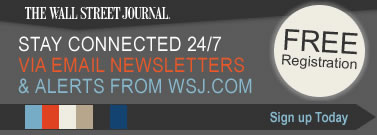How many gay, lesbian and bisexual people are there in the U.S.?
Until recently, little data existed to accurately answer that question, giving extended life to the claim attributed to Alfred Kinsey's work more than six decades ago that one in 10 adults is gay or bisexual. But that estimate has long been questioned by researchers for, among other things, being based heavily on interviews with prison inmates.
In recent years more surveys have included questions about sexual behavior and identity, giving researchers a better shot at making an estimate. They also have learned how difficult it can be to define homosexuality, and to determine to what extent survey answers are affected by the way the questions are asked.
The Census Bureau, for instance, says it saw the number of people who identified themselves as spouses to someone of the same sex drop by more than 50% in 2008 from a year earlier just because of how the questionnaire was organized. "It's a very difficult statistical issue," says Howard Hogan, the agency's associate director for demographic programs, of counting same-sex couples.
The Numbers Guy Blog
One of the most prominent social scientists in this field sought to produce a fresh estimate of the gay population recently, with what he and other researchers say are inconclusive results. In findings published last week, Gary Gates, a demographer and distinguished scholar at the Williams Institute of the University of California, Los Angeles, concluded that roughly 3.5% of Americans tell pollsters they identify themselves as lesbian, gay or bisexual.
To arrive at that figure, Dr. Gates simply averaged the results from five earlier surveys conducted over the past decade. By examining two additional surveys, Dr. Gates determined that an additional 0.3% identify themselves as transgender. That adds up to nearly nine million U.S. adults who identify as LGBT.
Other demographers say the 3.5% figure seems much more plausible than the discredited Kinsey number. But they say the data available are too scant to draw definitive conclusions.
One problem they cited with Dr. Gates's findings is that they combine results from surveys with different sample sizes and interview formats. The California Health Interview Survey canvassed about 50,000 Californians in 2009 by phone, finding that 3.2% identified themselves as gay, lesbian or bisexual. In contrast, roughly 5,900 people took Indiana University's online National Survey of Sexual Health and Behavior in 2009, and nearly twice as many— 5.6%—identified themselves that way.
"I think there are a lot of problems with every one of those data sets," says Randall Sell, associate professor at Drexel University's school of public health. A concern, he says, is that people are more likely to reveal their sexual identity via computer than by phone or in person.
Dr. Gates says without more information about the validity of each survey, averaging the results is the best compromise. "You can make an argument they're all credible," he says.
Dr. Sell also notes that if just a small percentage of heterosexuals accidentally identify themselves as gay, lesbian or bisexual, that can skew counts for those relatively small groups. "There are people who have never heard the word 'heterosexual,'" Dr. Sell says.
This is a major concern for the Census Bureau, which since the 2000 decennial census has been counting people who identify themselves as spouses or unmarried partners of someone of the same sex. (The census doesn't ask people directly about their sexual orientation.) The number of households with same-sex spouses dropped to 150,000 from 341,000 between 2007 and 2008. The agency's own research suggested that the positioning of possible answers on the 2007 survey prompted erroneous responses. "It gives you an indication of the kind of sensitivity that number can have to questionnaire layouts," says Dr. Hogan.
With such limited data available, why don't researchers launch an entirely new study? That would be an enormous undertaking, says Dr. Gates, because counting a relatively small group requires a very large sample size. Instead, he and other researchers would like to see questions about sexuality become standard on big government surveys such as the census so that the information can be linked to health, income and other factors, just as demographers can currently study race and gender.
Lowell Taylor, an economist at Carnegie Mellon University who wants to see federal surveys amass sexuality data, notes that many news stories on Dr. Gates's estimate of the LGBT population put it on par with the population of New Jersey.
"Here's the thing: We really do know how many people live in the state of New Jersey," Mr. Taylor says. "The number of people who are LGBT is much, much less precisely estimated."
Write to Carl Bialik at numbersguy@wsj.com











![[0418dome]](http://web.archive.org/web/20110419012322im_/http://si.wsj.net/public/resources/images/OB-NN986_0418do_A_20110418113048.jpg)
![[FAA.SUB]](http://web.archive.org/web/20110419012322im_/http://si.wsj.net/public/resources/images/NA-BL123_FAASUB_A_20110417195119.jpg)
![[OUTLOOK]](http://web.archive.org/web/20110419012322im_/http://si.wsj.net/public/resources/images/NA-BL121_OUTLOO_C_20110417190808.jpg)
![[OB-NO043_babies_C_20110418142358.jpg]](http://web.archive.org/web/20110419012322im_/http://si.wsj.net/public/resources/images/OB-NO043_babies_C_20110418142358.jpg)
![[CC-AA024_DUNCAN_C_20101119121050.jpg]](http://web.archive.org/web/20110419012322im_/http://si.wsj.net/public/resources/images/CC-AA024_DUNCAN_C_20101119121050.jpg)
![[OB-NO001_ford1_C_20110418122701.jpg]](http://web.archive.org/web/20110419012322im_/http://si.wsj.net/public/resources/images/OB-NO001_ford1_C_20110418122701.jpg)
![[KOSHER]](http://web.archive.org/web/20110419012322im_/http://si.wsj.net/public/resources/images/P1-BA250_KOSHER_C_20110417212258.jpg)
![[OB-NN624_tkts04_C_20110415192615.jpg]](http://web.archive.org/web/20110419012322im_/http://si.wsj.net/public/resources/images/OB-NN624_tkts04_C_20110415192615.jpg)
![[SportsFeature_0]](http://web.archive.org/web/20110419012322im_/http://si.wsj.net/public/resources/images/OB-NN803_Sports_C_20110417220327.jpg)
![[IBRAHIM]](http://web.archive.org/web/20110419012322im_/http://si.wsj.net/public/resources/images/MK-BL388A_IBRAH_C_20110417163427.jpg)
![[NYNICKS]](http://web.archive.org/web/20110419012322im_/http://si.wsj.net/public/resources/images/NY-AX024A_NYNIC_C_20110417234627.jpg)
![[IROBOT]](http://web.archive.org/web/20110419012322im_/http://si.wsj.net/public/resources/images/MK-BL394_IROBOT_C_20110417181428.jpg)
![[OB-NN313_0415wi_C_20110415014752.jpg]](http://web.archive.org/web/20110419012322im_/http://si.wsj.net/public/resources/images/OB-NN313_0415wi_C_20110415014752.jpg)
![[OB-NN602_lucci_C_20110415173132.jpg]](http://web.archive.org/web/20110419012322im_/http://si.wsj.net/public/resources/images/OB-NN602_lucci_C_20110415173132.jpg)
![[MIA.GOYDER]](http://web.archive.org/web/20110419012322im_/http://si.wsj.net/public/resources/images/AM-AN388_MIAGOY_C_20110417161300.jpg)







Most Recommended
“Hopefully, more than enough...;”
“William - right on every point....;”
“The president hid from the...;”
“I have never heard a more...;”
“This speech started out with...;”